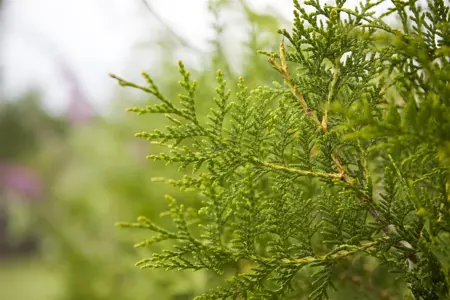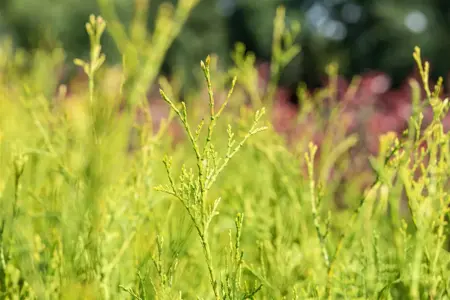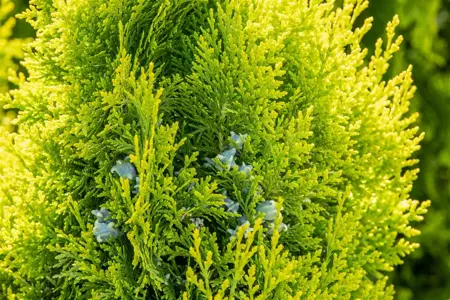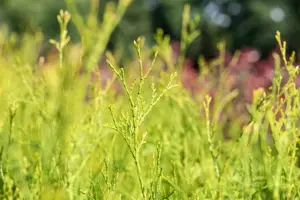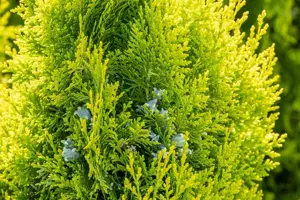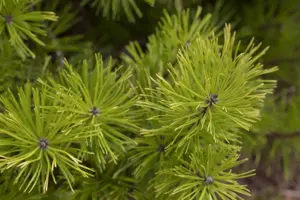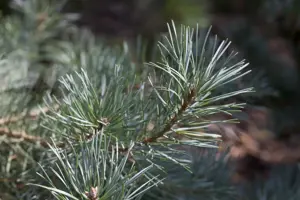Thuja occ. 'King of Brabant' - 60-80 CM C3
Thuja occ. 'King of Brabant' - 60-80 CM C3
Description
The White cedar 'King of Brabant'® (Thuja occidentalis) is a small tree that grows in a conical shape and usually reaches a height of around 8 metres and a width of around 6 metres. Its scale-like leaves have a medium green colour. They turn a beautiful bronze colour in winter. Decorative brown cones adorn Thuja occidentalis 'King of Brabant'® from October. This shrub is well tolerant of frost and prefers calcareous, nutrient-rich, sandy, loamy soil in a sunny to semi-shady position.
Bulletpoints
* tolerates pruning
* easy to care for
leaves
The White cedar 'King of Brabant'® is evergreen. Its needles are medium green, scale-like. With its bronze-coloured foliage, it sets beautiful accents in winter.
Bark
Red-brown, striped, torn bark makes this plant an eye-catcher in any garden.
Spread
North America.
Frost hardiness
The White cedar 'King of Brabant'® has good frost hardiness.
Growth
White cedar 'King of Brabant'® is a conical small tree. It usually reaches a height of 7 - 8 m and is approx. 4 - 6 m wide.
Water
The plant has a medium water requirement.
Pruning
Pruning, ideally from the end of June to July, is advisable for this plant.
Location
Preferred location in a sunny to semi-shady position.
Soil
Normal soil.
Planting time
Container plants can be planted all year round, except when the soil is frozen and in summer heat (over 30°C).
Tasks
- Pruning: In the period from the end of June to July
- Fertilise: In the period from March to April
- Watering: In the period from May to September.
Care
- A slow-release fertiliser can be used in spring. This releases the nutrients slowly and continuously so that the plant is evenly supplied over a longer period of time.
- Watering less frequently, but thoroughly and thoroughly, encourages the plant roots to penetrate deeper into the soil. This enables the plant to survive dry periods better.
Fruit
The cones of Thuja occidentalis 'King of Brabant'® appear from October. The young cones have a greenish-yellow colour.
Worth knowing
Plant or parts of the plant are poisonous.
Use
Hedge (pruning), solitary, group planting, topiary
Root
Thuja occidentalis 'King of Brabant'® is a shallow-rooted or heart-rooted tree and, depending on the soil, forms finely branched roots close to the surface.
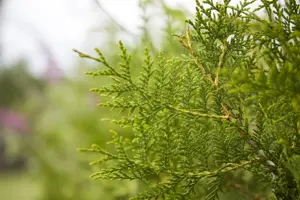
- Article number2933
-
EAN codeTHOKOBRA-2060080C3
- Latin nameThuja occ. 'King of Brabant'
- catalogLandscape shop

